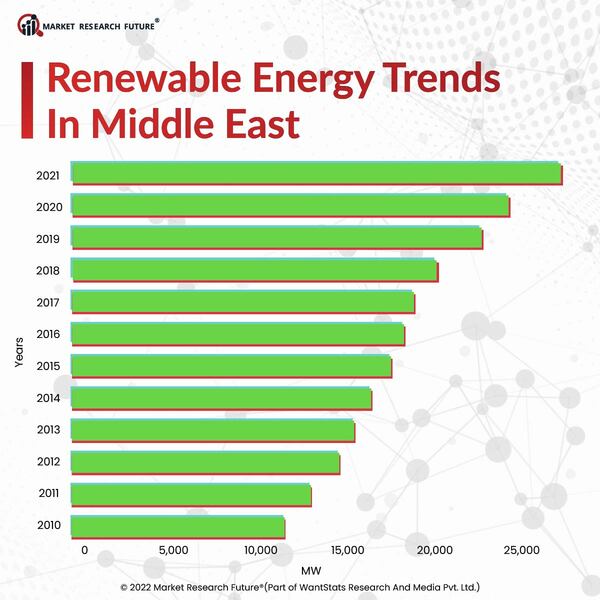Middle East To Become A Global Hub For Renewable Energy
Oil is just one of the energy sources in the Middle East region. The geography is blessed with the ability to boost the renewable energy sources to diversify the energy mix of the world. It’s not just US and the West on their way to become green energy market leaders. The Middle East nations are turning out to be one of the most significant hubs for renewable energy globally. Here is a quick review of the major renewable energy initiatives taking place in the Middle East.
1. Al Dhafra Solar Project in Abu Dabhi, UAE: The Al Dhafra Solar Project, a 2GW photovoltaic (PV) independent power producer (IPP) project, will be located in the United Arab Emirates, around 35 km south of Abu Dabhi. The project is scheduled for commissioning at the end of 2022, and it is anticipated that 4,000 jobs will be generated during the construction period.
2. Noor Energy 1, Dubai, UAE: The 950 MW ambitious $3.9 billion project is the largest single-site concentrated sun power (CSP) plant in the world, generating 700MW from CSP technology and 250MW from PV power output. The Noor Energy 1 solar power complex will support the "Dubai Clean Energy Strategy 2050."
3. Hatta Wind Power Project, Dubai, UAE: A first-ever wind power project in the UAE has been unveiled by Dubai Electricity and Water Authority (DEWA). The project is a component of the UAE's sustainability goal to produce 75% of its energy using clean technology by 2050.
4. Sudair Solar Power Plant, Riyadh, Saudi Arabia: With an installed capacity of about 1,500MW, it is on track to grow into one of the biggest single-contracted solar PV facilities in the world and the biggest of its kind in Saudi Arabia. The project, which was the first to be completed under The Public Investment Fund's (PIF) renewable energy initiative, recorded the second-lowest cost of solar PV electricity production in the world [USD 1.239 cents/kwh]. The Sudair PV IPP will have the capacity to power 185,000 homes while reducing annual emissions by about 2.9 million tonnes. The initial commissioning of the project is scheduled at the end of 2022.
5. Manah I & II Projects, Manah, Saudi Arabia: In the fourth quarter of 2024, the two new utility-scale solar power facilities in the Wilayat of Manah that have a combined capacity of 1,000MW are anticipated to begin operating commercially. According to Oman Vision 2040 Implementation Follow-Up Unit, Manah 1 and 2 Solar Independent Power Projects (IPPs) will help Oman move toward using renewable energy to meet the demand for electricity.
Manah 1 and 2 solar projects are being implemented with an estimated expenditure of RO300mn by Oman Electricity and Water Procurement Company (OPWP), the country's sole power and water supplier. The projects have a combined production capacity of 500MW each and are situated in the Wilayat of Manah.
The overall investment in renewables in the Middle East has increased sevenfold in a decade, from $960 million in 2011 to $6.9 billion in 2021, according to Bloomberg New Energy Finance, an energy consulting firm with its headquarters in New York City. Saudi Arabia spent almost $1.5 billion on solar energy last year, and the UAE has invested nearly $9 billion since 2017. IRENA data from 2020, however, show that the region now generates less than 4% of its electricity from renewable sources, in contrast to the global average of 28%, the region now generates less than 4% of its electricity from renewable sources, according to IRENA data from 2020.






